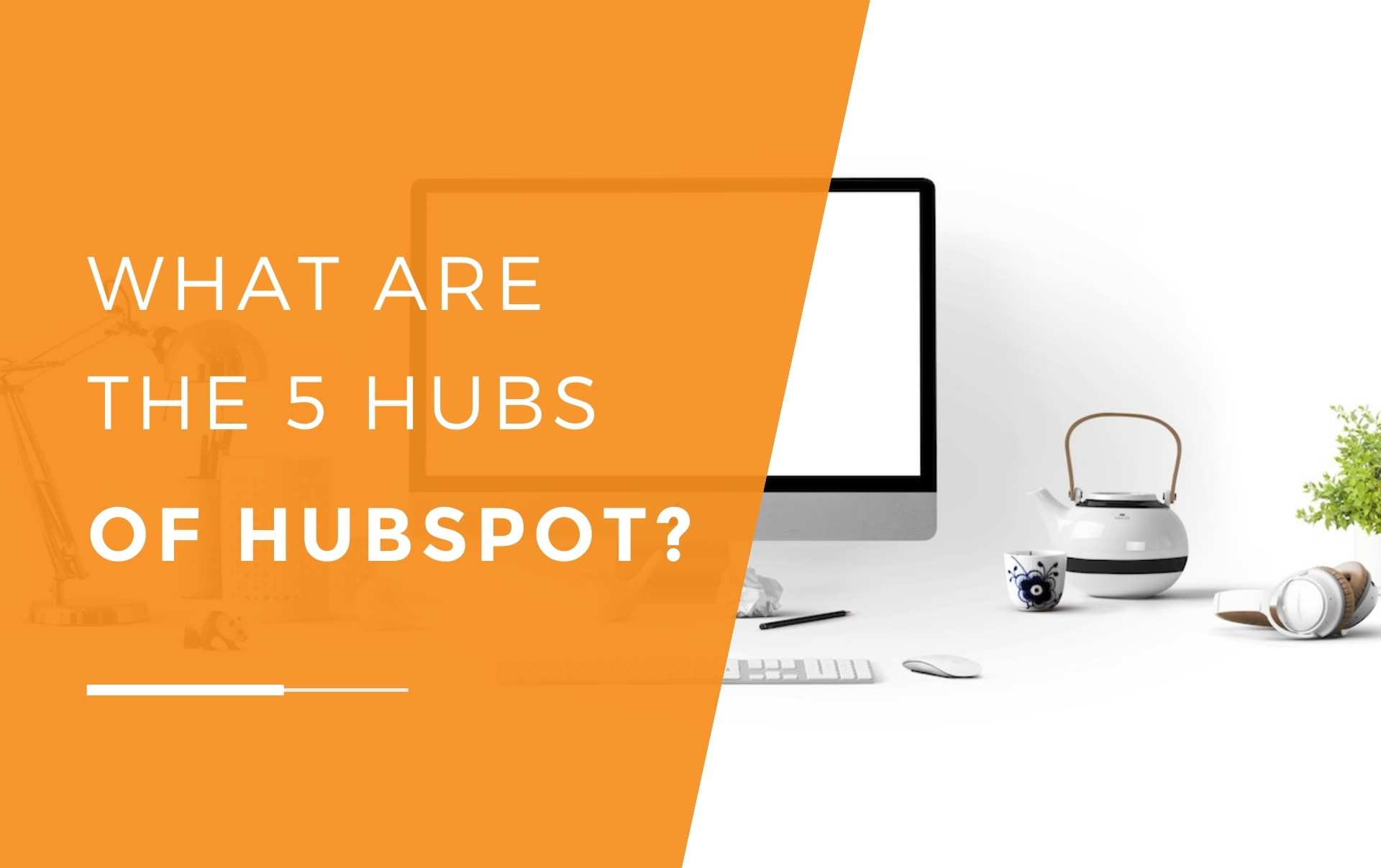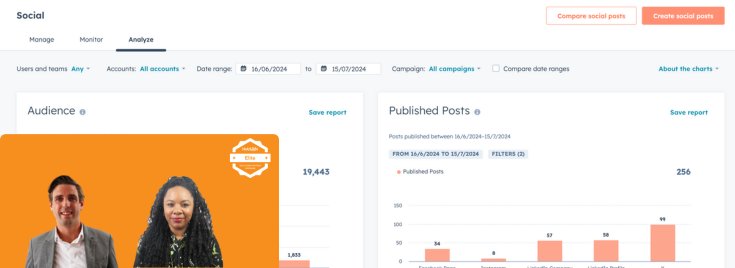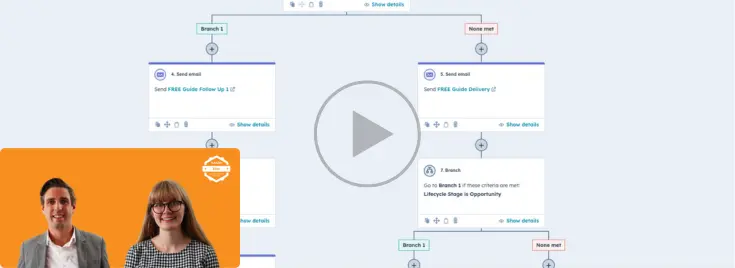HubSpot Starter vs HubSpot Pro: A Detailed Comparison
by Will Williamson on 18-Dec-2024 08:53:22

HubSpot Starter and HubSpot Pro are two of the three paid tiers available to HubSpot users, and are the most commonly used by small and mid-size businesses. The third and highest paid tier, HubSpot Enterprise, is calibrated towards the needs of larger businesses and high-growth SMEs. We are going to assume for the purpose of this article that you’ve already got some familiarity with the HubSpot platform.
Maybe you are already a HubSpot free CRM user and want to find out more about the platform’s premium tools and features?
If you’re brand-new to HubSpot, grab yourself a warm drink and download our Free Guide To The HubSpot CRM first, and we’ll see you back here in a little while.
Ready to invest in HubSpot premium? Where to start
HubSpot free CRM is an excellent CRM and has a remarkable breadth of features for a free product. However, it’s with the features available to paid subscribers that HubSpot really begins to shine as a business development tool. So, of Starter and Pro, which plan most optimally fits your business needs and growth trajectory?
Pricing
Let’s get the question of cost out of the way. HubSpot Starter is, as its name implies, an entry-level subscription for small start-ups, micro businesses, and business owners that are entirely new to the platform. This subscription starts at just £18 per month, billed annually, allowing you to experiment with a cross-section of HubSpot premium features without it overwhelming your budget.
HubSpot professional starts at £1,404 per month, again billed annually, which is a considerable leap from Starter and reflects the comprehensive range of tools and capabilities available to Pro subscribers. HubSpot Pro simply hits different to starter at every level. This fee includes seats for five users, and additional users can be added for £77 per month per user.
What you get for your money
Investing in any of the three paid HubSpot tiers give you access to premium features in all five ‘hubs’: the Marketing Hub, the Sales Hub, the Service Hub, the CMS Hub (web building and development), and the Operations Hub, so you’ll immediately notice a difference in your capabilities and potential compared to the free CRM.
Nevertheless, the difference between Starter and Pro is a lot of money, the equivalent of hiring a junior employee in house, especially with the commitment to pay annually, so what are the main differences between the two tiers?
Marketing Hub
-
Starter: ideal for small businesses at the very start of their marketing journey, giving you access to basic email marketing, paid ad management, social media, and core content marketing tools.
-
Pro: for growing companies and small teams serious about investing in their marketing strategy, the Pro tier includes a range of advanced features such as content strategy tools, revenue attribution reporting, and A/B testing capabilities to help business owners optimise their campaigns effectively for the best results.
Sales Hub
-
Starter: The starter tier provides a simple CRM system, with email sequences and reminders, and intuitive reporting tools to help business owners track prospects through the sales pipeline. It’s a big increase in capabilities from the free CRM, and many small businesses don’t need any more than this, but the CRM is restricted to 1,000 marketing contacts on the Starter plan.
-
Pro: designed for a more comprehensive approach to sales management, HubSpot Pro includes advanced CRM customisation options, predictive lead scoring, and sales forecasting, as well as seamless integrations with popular software systems, and advanced automation capabilities to improve the productivity of your team.
(Customer) Service Hub
-
Starter: an effective tool for managing small customer service teams, giving you a shared inbox, a live chat feature, and basic customer support automation to improve the customer service responsiveness of your business.
-
Pro: Pro comes with a range of additional tools to help businesses prioritise customer service excellence, including an advanced virtual helpdesk, customer feedback tools, AI-powered website chat bots, and customer feedback analysis dashboard to inform your marketing campaigns.
CMS (Content Management System) Hub
-
Starter: the entry-level tier comes with all the straightforward, easy-to-use content creation and hosting tools you need to develop a solid digital platform for your company, including a good business website, blog, and landing pages.
-
Pro: ideal for SMEs with more complex content requirements and a multi-tiered digital ecosystem, Pro lets you create customised webpages, gives you a content partition system for managing sandbox content, and more advanced SEO recommendations.
Operations Hub
-
Starter: includes contact website activity and attribution reporting, with a focus on top of funnel activity – i.e. awareness level website traffic and lead generation.
-
Pro: for companies needing a deeper level of insight into their website traffic and more responsive performance tracking, HubSpot Pro gives you access to advance attribution reporting, custom report creation capabilities, forecasting, goal/KPI setting, and the potential to create custom event-based triggers for your customer life-cycle stages.
Commerce Hub
-
Starter: lets you set up a simple online shop with basic e-commerce analytics, with the ability to manage your products and orders in one place
-
Pro: for SMEs with robust e-commerce needs, the Professional tier includes more advanced online store building and management capabilities, including abandoned cart recovery messages, advanced personalisation features to enhance your customer shopping experience, and custom reporting and inventory management tools.
What plan is right for your business?
For small teams of less than five people, the Starter plan provides an excellent entry point to HubSpot, offering the fundamental tools you need to manage marketing, sales, and service processes more efficiently. This may be all you need. However, as your business grows and demands more advanced functionality, the Pro plan could help you leverage more advanced analytics, customisation potential and automation to drive continual growth and operational efficiency.
You can always begin with a Starter plan and upgrade to Pro if and when your needs change. However, if you’ve already got a fairly large marketing database, an active digital sales strategy, or an established team of five or more people who need to use the platform, it may be more cost effective and productive for you to dive straight into the Pro level subscription straightaway.
Working with an experienced Elite HubSpot Partner Agency, such as JDR, can help you get the best value from your investment, with greater and faster returns and a shorter learning curve, then you might achieve by going it alone.
To find out more or to discuss your options with one of our experienced HubSpot specialists, please contact us today by clicking here.
Image source -Unsplash
- Inbound Marketing (SEO, PPC, Social Media, Video) (823)
- Strategy (361)
- Sales & CRM (193)
- Marketing Automation & Email Marketing (190)
- Business Growth (162)
- Website Design (160)
- Hubspot (137)
- Lead Generation (115)
- Google Adwords (98)
- Content Marketing (94)
- Conversion (48)
- Case Studies (47)
- News (47)
- Ecommerce (39)
- Webinars (34)
- SEO (24)
- AI (19)
- Events (19)
- Video (17)
- LinkedIn Advertising (15)
- Video Selling (15)
- Software training (13)
- Niche business marketing (11)
- The Digital Prosperity Podcast (10)
- Facebook Advertising (6)
- HubSpot Case Studies (5)
- December 2025 (7)
- November 2025 (6)
- October 2025 (17)
- September 2025 (16)
- August 2025 (14)
- July 2025 (14)
- June 2025 (5)
- May 2025 (19)
- April 2025 (15)
- March 2025 (13)
- February 2025 (13)
- January 2025 (8)
- December 2024 (2)
- November 2024 (4)
- October 2024 (21)
- September 2024 (4)
- August 2024 (8)
- July 2024 (14)
- June 2024 (16)
- May 2024 (25)
- April 2024 (15)
- March 2024 (18)
- February 2024 (5)
- January 2024 (10)
- December 2023 (6)
- November 2023 (10)
- October 2023 (13)
- September 2023 (12)
- August 2023 (14)
- July 2023 (13)
- June 2023 (14)
- May 2023 (15)
- April 2023 (13)
- March 2023 (14)
- February 2023 (13)
- January 2023 (15)
- December 2022 (13)
- November 2022 (6)
- October 2022 (8)
- September 2022 (22)
- August 2022 (15)
- July 2022 (13)
- June 2022 (16)
- May 2022 (14)
- April 2022 (16)
- March 2022 (17)
- February 2022 (11)
- January 2022 (8)
- December 2021 (6)
- November 2021 (7)
- October 2021 (11)
- September 2021 (10)
- August 2021 (7)
- July 2021 (7)
- June 2021 (4)
- May 2021 (4)
- April 2021 (1)
- March 2021 (3)
- February 2021 (5)
- January 2021 (4)
- December 2020 (7)
- November 2020 (6)
- October 2020 (5)
- September 2020 (9)
- August 2020 (18)
- July 2020 (17)
- June 2020 (17)
- May 2020 (10)
- April 2020 (21)
- March 2020 (24)
- February 2020 (21)
- January 2020 (12)
- December 2019 (23)
- November 2019 (12)
- October 2019 (14)
- September 2019 (16)
- August 2019 (15)
- July 2019 (13)
- June 2019 (6)
- May 2019 (8)
- April 2019 (4)
- March 2019 (2)
- February 2019 (2)
- January 2019 (2)
- December 2018 (3)
- November 2018 (24)
- September 2018 (11)
- August 2018 (9)
- June 2018 (3)
- May 2018 (6)
- April 2018 (14)
- March 2018 (12)
- February 2018 (16)
- January 2018 (15)
- December 2017 (15)
- November 2017 (18)
- October 2017 (23)
- September 2017 (19)
- August 2017 (28)
- July 2017 (27)
- June 2017 (25)
- May 2017 (18)
- April 2017 (17)
- March 2017 (16)
- February 2017 (17)
- January 2017 (14)
- December 2016 (21)
- November 2016 (27)
- October 2016 (25)
- September 2016 (16)
- August 2016 (20)
- July 2016 (19)
- June 2016 (14)
- May 2016 (20)
- April 2016 (24)
- March 2016 (22)
- February 2016 (28)
- January 2016 (27)
- December 2015 (28)
- November 2015 (19)
- October 2015 (9)
- September 2015 (12)
- August 2015 (5)
- July 2015 (1)
- June 2015 (10)
- May 2015 (3)
- April 2015 (11)
- March 2015 (14)
- February 2015 (15)
- January 2015 (12)
- December 2014 (2)
- November 2014 (23)
- October 2014 (2)
- September 2014 (2)
- August 2014 (2)
- July 2014 (2)
- June 2014 (7)
- May 2014 (14)
- April 2014 (14)
- March 2014 (7)
- February 2014 (2)
- January 2014 (7)
- December 2013 (9)
- November 2013 (14)
- October 2013 (17)
- September 2013 (3)
- August 2013 (6)
- July 2013 (8)
- June 2013 (4)
- May 2013 (3)
- April 2013 (6)
- March 2013 (6)
- February 2013 (7)
- January 2013 (5)
- December 2012 (3)
- November 2012 (2)
- September 2012 (1)
Subscribe by email
You May Also Like
These Related Blogs

What Are The 5 Hubs Of HubSpot?
HubSpot is a powerful sales and marketing application, consisting of HubSpot CRM, which is free, plus separate ‘suites’ for marketing, sales, customer …

Replay: How To Use HubSpot For Social Media (HubSpot Masterclass)

Replay: Maximise E-commerce Sales With HubSpot (HubSpot Masterclass)
Maximise E-commerce Sales With HubSpot If you sell products or services online, then this webinar is for you. Maximising sales as an E-commerce busine …



